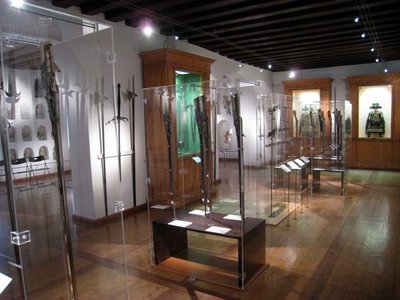Chamber of Art and Curiosities


In 1563, after being appointed
provincial sovereign of Tirol, Austrian Archduke Ferdinand II ordered Italian architects to begin turning a 10th-century medieval fortress in Tirol’s capital city into a Renaissance-style castle for his wife Philippine Welser, whom he’d married in secret some years earlier.
Parts of Schloss Ambras (Ambras Castle) were specifically built to store the archduke’s massive collection of rare objects, which became known as the Chamber of Art and Curiosities. His collection is the only wunderkammer from the
Mannerism period
that remains in its original place today, and is consequently considered one of the oldest museums in the world.
Cabinets of curiosities came into prominence in Europe during the Renaissance era. These “wonder rooms” contained religious artifacts, paintings, oddities, and natural relics, and were often used to prove a nobleman’s refined and interesting tastes.
Ferdinand II’s curiosity cabinet still houses a one-of-a-kind glass bell piano—the only one to have survived to the present day. There’s a stuffed shark and a tree with antlers that appear to be growing from it.
The collection features figurines of death, objects from far-off lands, rare products of nature, portraits of people thought to be “miracles” like the Hirsute Man, and unusual musical instruments.
Centuries later, the amazing collection can still be enjoyed in the castle chambers built to house the precious items.